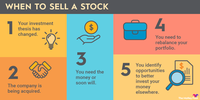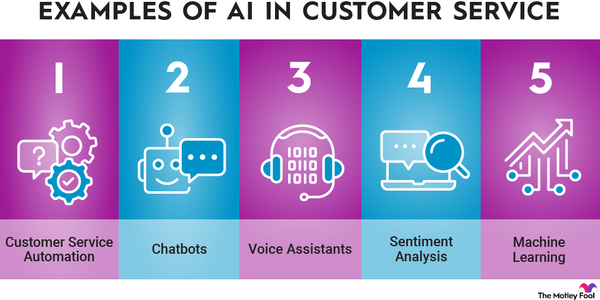Artificial intelligence (AI) stocks have become the hottest thing on Wall Street, and few stocks in the sector have attracted more attention than C3.ai (AI 3.02%). Shares of C3.ai more than tripled through the first half of 2023 as interest in AI spiked, and investors have taken a closer look at the company's unique position in the sector.
The company calls itself the "AI for the enterprise company." It operates as a software-as-a-service (SaaS) business, providing more than 40 turnkey enterprise AI applications to its customers.
It handles tasks that include inventory optimization, demand forecasting, and anti-money laundering, many of which are based on machine learning techniques. In addition to standalone applications, the company offers a single platform for enterprise AI, though most of its revenue comes from standalone applications.
Artificial Intelligence
Building on the excitement around ChatGPT, C3.ai also launched its own generative AI product suite built into the C3.ai platform and offers tools such as enterprise search (i.e., a company's ability to use a natural language interface to search for information across the company's information systems).
In this article on C3.ai, we'll explore how to invest in the stock, review C3.ai's recent financial results and projections, and discuss its growth potential in AI.
Natural Language Processing (NLP)
How to buy C3.ai stock
How to buy C3.ai stock
C3.ai was founded in 2009 and went public in December 2020. The stock initially surged after the debut but crashed in the tech sell-off in 2022. As a publicly traded company, any investor can buy the stock. At around $33, it's affordable to pretty much any investor.
Below is a step-by-step guide to buying the stock if you're wondering how to invest in C3.ai.
First, you'll need to open up your brokerage account and find C3.ai under the AI ticker. From there, you'll have to decide what kind of order you want to make for the stock. The three main types of orders are market, limit, and stop orders:
- A market order tells your brokerage to buy the stock at the current market price.
- A limit order uses the maximum price you would be willing to pay for the stock, so you can put in an order and not have to monitor it continuously.
- A stop order is similar to a limit order, executed when a stock reaches a certain price. However, a stop order cannot be seen by the market, and a limit order can.
- You can also use a stop-limit order, which combines features of both stop orders and limit orders.
Once you've decided on the kind of order you'd like to place, you can choose a price and execute the order. If the price is acceptable, your brokerage will fill the order.
Should I invest in C3.ai?
Should I invest in C3.ai?
C3.ai has been one of the more volatile stocks on the market since its initial public offering (IPO) at the end of 2020. The stock almost doubled right out of the gate before giving up those gains in subsequent months as the company delivered disappointing results.
Meanwhile, market sentiment shifted, and in a rising-interest-rate environment, investors balked at high-priced unprofitable software stocks like C3.ai. At the beginning of the year, the stock was down more than 90% from its all-time high, but the emergence of AI and the excitement around generative AI have fed interest in the stock.
C3.ai has yet to convert that interest to meaningful growth. In its most recent quarter, revenue was flat at $72.4 million, and the business is still deeply unprofitable.

On a generally accepted accounting principles (GAAP) basis, the company lost $65 million in the quarter, almost as much as it brought in for revenue. For the full fiscal year 2023, the company actually lost more money than it made in revenue, at $268.8 million compared to $266.8 million.
Investors hoping for an acceleration in growth will have to be patient. For fiscal 2024, the company forecasts revenue growth of just 15% top-line growth at the midpoint of its range of $295 million to $320 million. It also sees a non-GAAP operating loss of $50 million to $75 million, which is within range of the $68.1 million it reported for fiscal 2023.
Is C3.ai profitable?
Is C3.ai profitable?
Management said it expected to be profitable on a non-GAAP basis by the end of fiscal 2024. It also touted an improving sales pipeline and increasing interest in its products.
Revenue
After this year's rally, C3.ai once again looks expensive, trading at a price-to-sales ratio of 17. That is especially pricey for a company growing so slowly.
C3.ai is a unique company that seems to occupy a distinctive niche in AI. However, other tech companies or AI start-ups could be working on similar applications. That differentiated positioning could give the company significant upside potential, especially if more businesses adopt AI tools like those the company offers.
Given its lofty valuation and sluggish growth, investors are best off treating C3.ai cautiously until it becomes clear that the company can capitalize on the opportunity in AI.
Does C3.ai pay a dividend?
Does C3.ai pay a dividend?
C3.ai does not pay a dividend and is unlikely to do so for the foreseeable future. Paying a dividend is generally reserved for reliably profitable, mostly mature companies, and C3.ai is neither profitable nor mature.
In its annual report, the company said it does not anticipate declaring or paying dividends in the foreseeable future. Considering most SaaS companies don't pay dividends, C3.ai is unlikely to do for at least several years.

ETFs with exposure to C3.ai
ETFs with exposure to C3.ai
Approximately 45 exchange-traded funds (ETFs) have exposure to C3.ai. Although most have very little exposure to the AI stock, there are five ETFs, of which C3.ai makes up at least 1%.
It makes up 9.2% of the ProShares S&P Kensho Smart Factories, which also owns shares of other automation and AI-focused stocks, like Rockwell Automation (ROK 1.15%) and 3D Systems (DDD 0.0%). The Smart Factories ETF, however, is small, with less than $1 million in net assets.
An ETF is a good way to get exposure to a range of AI stocks and other related companies. You could choose from a number of AI ETFs as well.
Will C3.ai stock split?
Will C3.ai stock split?
Several high-profile growth stocks have split their stocks in the last few years, attracting investor attention. Those include but are not limited to Tesla (TSLA -1.11%), Apple (AAPL -0.35%), Amazon (AMZN 3.43%), Alphabet (GOOG 9.96%)(GOOGL 10.22%), Shopify (SHOP 1.11%), and Nvidia (NVDA 6.18%).
There's no hard-and-fast rule determining at what price a stock should split its shares. Generally, it follows substantial price appreciation. It would be unusual for a stock to split at a price of less than $100. C3.ai could, eventually, split its stock, but that's unlikely to happen unless the stock achieves significant growth and management is confident it can maintain it.
Investors should also be aware that a stock split doesn't affect a stock's fundamentals. Splits get a lot of attention from investors and in the media, and there is evidence that they can boost a stock since they reflect management's confidence. However, investors are much better off buying a stock based on fundamentals rather than because it is planning to do a stock split.
The bottom line on C3.ai
C3.ai is one of the more exciting AI stocks on the market today, but like other emerging technologies in the past, investors should treat the stock with caution. Dating back to the dot-com bubble, new technologies have captivated investors but often lead to bubbles and stock crashes.
Once again, stocks like C3.ai seem to have jumped largely based on hype, as their growth rates are still relatively slow. With a unique product offering, C3.ai has the ability to break through in AI -- especially if its offering gains traction with customers -- and plenty of investors are still wondering how high C3.ai will go.
Keep your eye on the company's results, as it could capitalize on the AI boom. Still, its inability to do so thus far has been a warning sign for the stock.
Investment topics related to C3.ai
Investing in C3.ai FAQs
How do I buy C3.ai stock?
C3.ai is a publicly traded stock, so you can buy it like any other stock. All you have to do is open your brokerage account and execute a trade.
Will C3.ai continue to rise?
C3.ai shares could keep rising after more than tripling in the first half of the year. Predicting short-term stock movements is difficult, but C3.ai's valuation also looks stretched after this year's rally, meaning future gains could be more difficult to achieve.
Is C3.ai a good stock to buy right now?
C3.ai is a risky stock. Historically, it's been volatile, and at a price-to-sales ratio near 20, it's expensive, even though its growth rate is slow. While the stock does have upside potential (especially if its AI applications gain traction with customers), it could also easily pull back after this year's rally.

































































































































































































































